Inspire me
How to Invest in Conscious Art
Happy World Earth Day! We take a look at how investing in art can be a sustainable choice and listen to how some of our artists are using their work to help the planet.

April 22 marks World Earth Day – an annual day of environmental action and a day to celebrate the beauty of our planet. For 2023, the theme is Invest In Our Planet, a continuation of last year’s mission and, for many of us, sustainable living starts with the choices we make at home.
Unlike other more disposable home purchases, original art is a timeless investment that will bring you joy for years to come. But how can we make buying beautiful artworks for our homes even more sustainable? We reached out to our galleries and artists to find out what they’re doing to make the art world more planet-friendly.
From focusing on subject matter that documents the beauty and fragility of the natural world, or highlights the plight of endangered species, to creating artworks from recycled materials and switching to sustainable packing, our artists and galleries are making sustainable art buying easy.
Read on for inspiration…
Methods, Materials and Mediums
As more and more of us look to make sustainable choices for our homes, artists too are looking at ways to reduce the impact of their work on the planet by experimenting with different methods, materials and mediums.
For Charlotte Elizabeth, whose work is inspired by an awe of nature, this has meant isolating all materials used for her wild ocean series to water-based only.
“I have become increasingly aware over the last few years of the environmental impact of the work I choose to make. I refuse to paint the ocean with anything that will damage it.”
Charlotte Elizabeth, artist
Finding the abundance of single use plastics in creative industries “hugely problematic”, Charlotte mixes her own colours in recycled yoghurt pots. “It’s easy when you’re inspired and distracted to reach for a new vessel, a new brush, to toss away something rather than try to reuse it. I reject the use of anything disposable and take time, pride and care to make sure the equipment I use will last a lifetime and not end up polluting the oceans and skies I find so inspiring.”
“I feel as the creator, it’s my duty to fully understand what I’m putting into the earth. I make it my responsibility to research, understand and use and dispose of anything that goes into my work in a responsible way. My work relies upon an awe of our astonishing natural world, I try to take as much care of it as I can.”
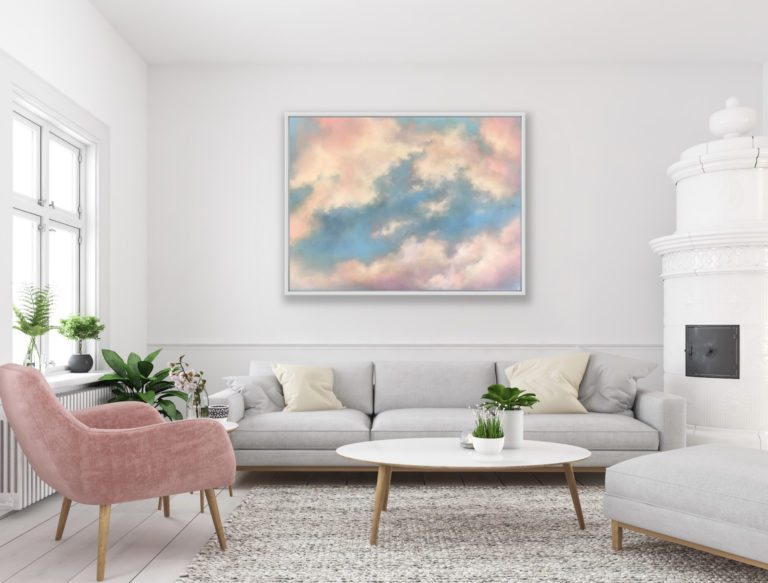
For her lunar series, Charlotte draws inspiration from the night sky, which she chooses to paint free of light pollution. “I make a point to never depict human intervention in my paintings. I paint wild oceans, but without boats, wild Scottish landscapes without the cottages, starry skies without the light pollution, cloudscapes not segmented by wires and pylons. This is important to me, to reinforce our insignificance on a grand scale, humans merely as caretakers for a planet both ancient and eternal and our ultimate duty of care is to return it in the state we found it.”
An artist whose work upcycles existing materials is Joanne Tinker, whose colourful mixed media collages transform thrown away objects and waste into stunning recycled artworks. For ‘Vessels’, this included sweet wrappers and foils that were hand sculpted into tiny bowl-like shapes in an array of vibrant colours, while ‘Please Take Your Seat’ features miniature chairs made from champagne tops.

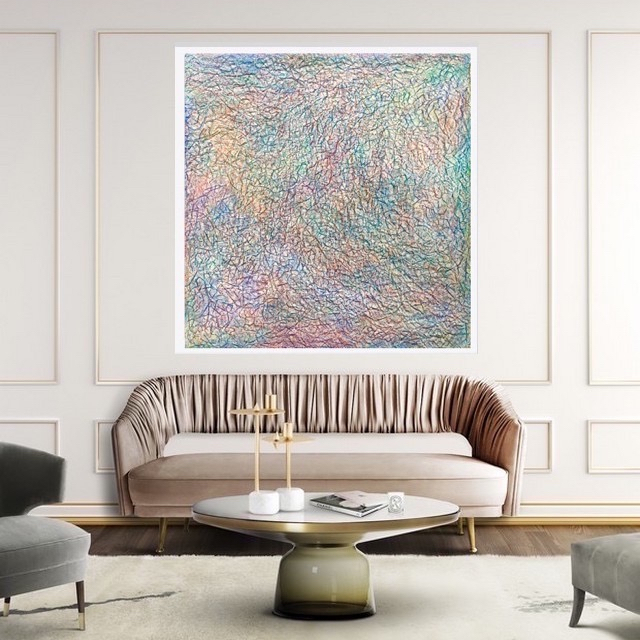
London artist Rakerman collected the small print referred to as ‘Terms & Conditions’ from a range of bills, retail agreements, guarantees, insurances and official correspondence over a period of 4 years to create ‘Terms & Conditions I’. Like many of his other works, this paperwork was shredded and transformed into a frottage drawing with coloured wax crayons. Seeing the sublime in discarded ephemera, such as fishing nets, guidebooks, receipts and train tickets, Rakerman creates beauty through sustainability and recycling these items into art works.
Sculptor Richard Perry works primarily in stone carving which, for him, creates strong connections between himself, his material and the environment. He places importance on knowing where his stone comes from in order to make that connection more tangible.
“Some of my recent studio work has been partly inspired by reading about extinct glaciers and trying to visualise what the very last body of ice might look like before it ceases to exist. I like work that is born from these sorts of subtle notions, notions that are serious and relevant, but not necessary to overstate.”
Richard Perry, artist
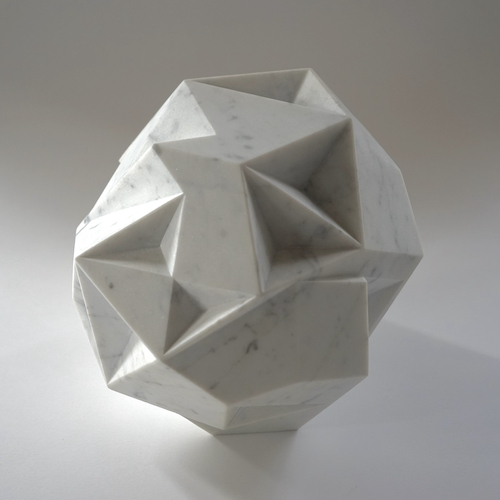
Subject Matter
The natural world has long been a source of inspiration for artists, but at a time when delicate ecosystems hang in the balance under the threat of climate catastrophe, artists are not only capturing the beauty of our planet, but also what will be lost should action not be taken.
Painter Sam Gare’s work depicts the natural landscapes from which modern urban lifestyles are increasingly disconnected, aiming to share the positive power of nature on the human spirit and soul. Through her work she hopes to reconnect us to nature, and in turn promote us to conserve and respect the wilderness.
Sarah Duncan’s etchings and drawings focus on the key elements that make up the natural world – water, stars, ice and snow. Her subject matter highlights the increasing speed of change in our planet’s climate and landscapes: “I continue to explore moments of transition and turbulence in the landscape. I choose to show the beauty rather than the devastation, a celebration of what we stand to lose,” says Sarah.
Photographer Sandra Jordan hopes that showing the absolute beauty of our world will inspire people to take better care of our planet. Her “Silent Beauty” project documents the vast masses of ice that dominate the fragile landscape, producing awe-inspiring artworks.
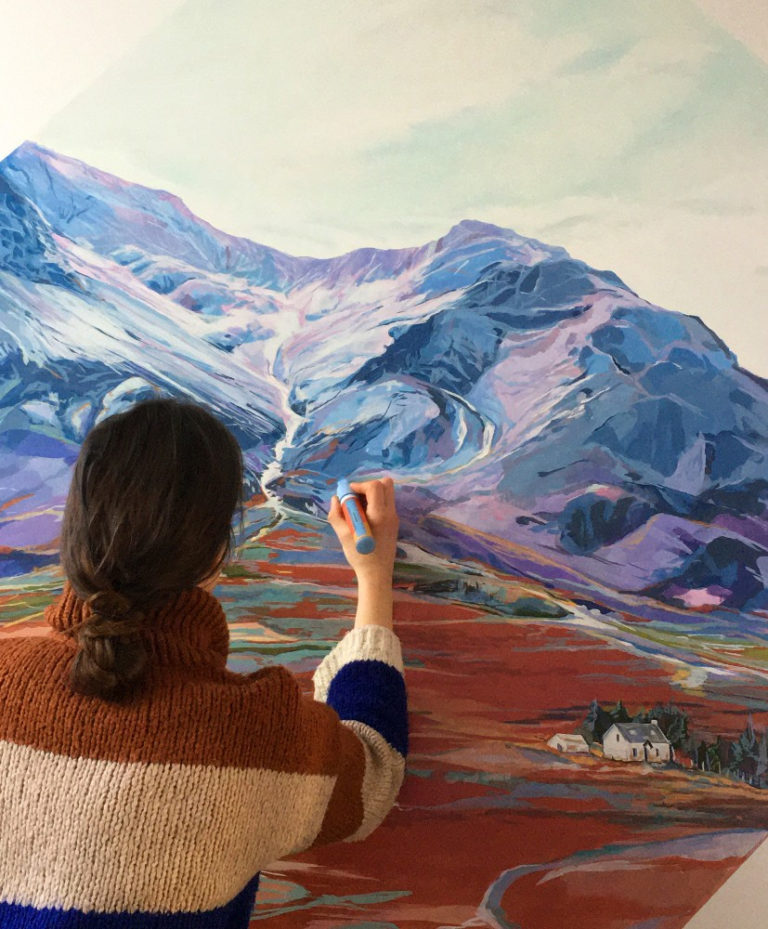
“Scientific data is important to relay the facts but photography, as a more accessible universal medium, can be used as a gateway to communicating the visual reality of climate change and environmental issues,” says Sandra. “It can be very emotive, drawing people in by connecting them emotionally to the image and therefore the situation, potentially, I believe more so than facts and figures.”
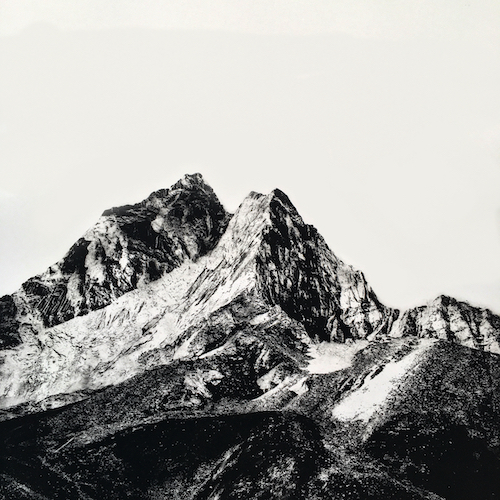
70 x 70cm, Smithson Gallery

Another photographer whose work highlights the interaction between mankind and nature and the effect it has on the environment, is Nomi Baumgartl. “‘We are all an integrated part of nature, a part of the universe.’ This quote by the famous photographer Andreas Feininger has governed my life,” Nomi says.
“Nowhere has the climate change progressed so rapidly and can be observed so distinctly as in the form of the melting ice of the arctic.”
Nomi Baumugartl, Artist
“In my photography I want to trigger positive emotions by showing how wonderful our world is, and through that realisation to wake consciousness that we humans are part of the whole. We cannot stop the process of climate change but each one of us can make a difference in slowing it down. This is our responsibility to the next generations.”
Tips for Buying and Owning Art
It’s not just artists who are working for the good of our planet, our galleries are also working on being as environmentally responsible as possible. All of the galleries we partner with support the careers of living artists, so you know that when you buy from an Affordable Art Fair, you’re not only investing in a piece for your home that will last a lifetime, but you are also supporting the art eco-system, too.
Many galleries are making commitments to reduce their climate impact: Smithson Gallery uses a local framer and courier in order to reduce their carbon footprint through the SME Climate Commitment; Forest Gallery operates on a paperless system unless requested otherwise, and considers the environment in marketing decisions by sending web links for brochures and long lasting painted murals as promotions for exhibitions.
So how then can we ensure our art buying habits are as eco-conscious as possible? The most sustainable shopping habit you can make is buying pieces that you truly love, and that you will want to keep in your home or family for generations to come. Choosing artworks based on your own values, rather than any current trends, means that you are more likely to keep the artwork in your collection.
Main image: Amanda Harman, ‘First Light’, archival pigment photograph, 35cm x 25cm, edition of 9, Lucinda Dalton Gallery
